Armando M. Toda
Automating Gamification Personalization: To the User and Beyond
Jan 14, 2021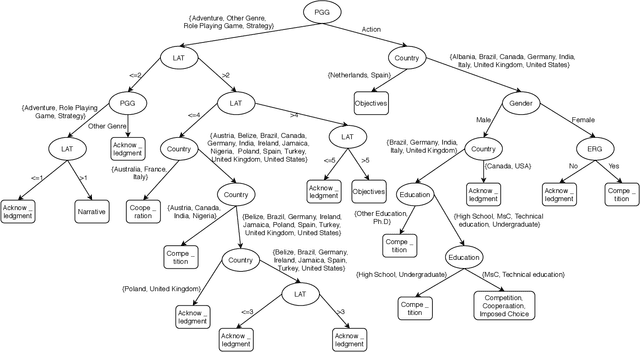
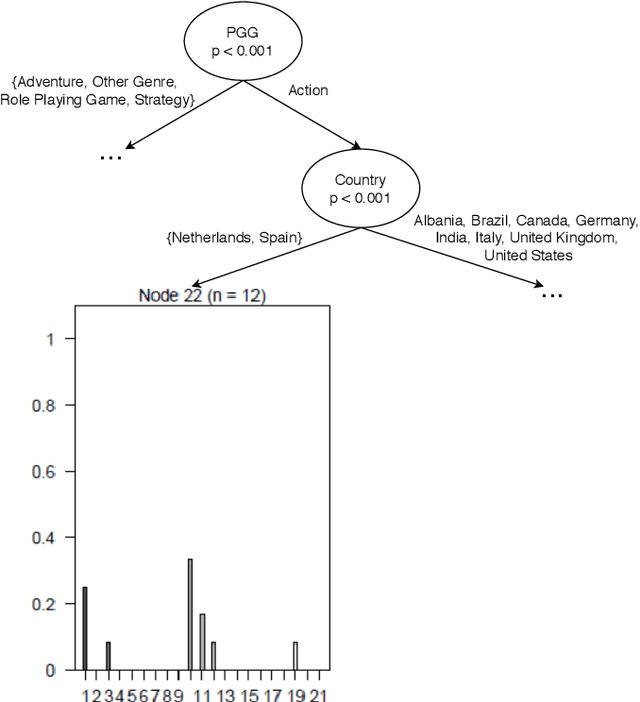
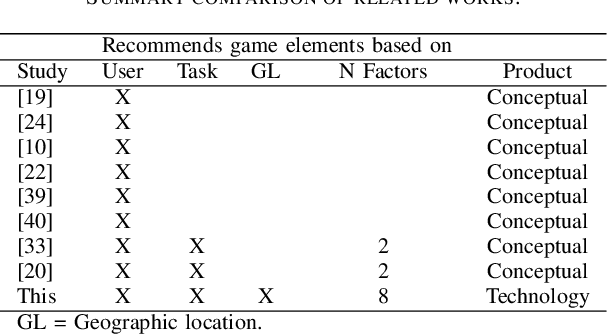
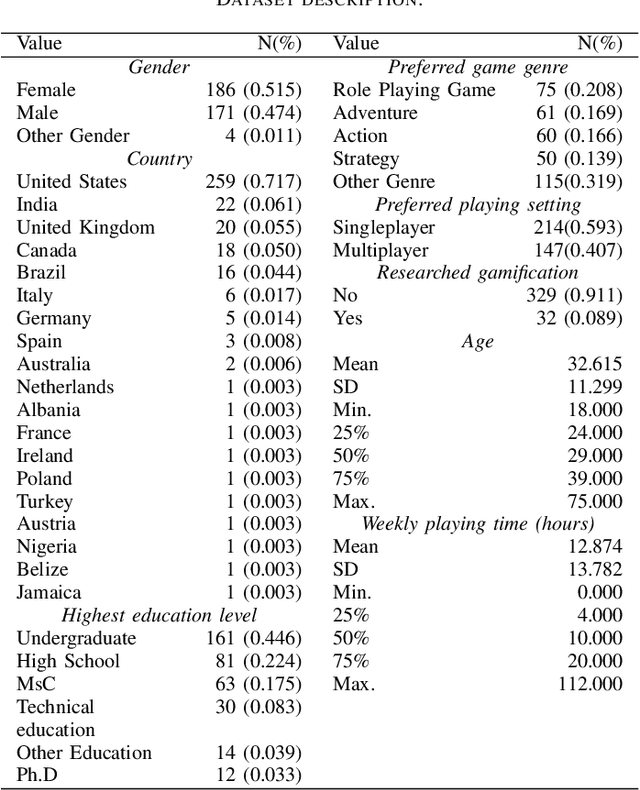
Abstract:Personalized gamification explores knowledge about the users to tailor gamification designs to improve one-size-fits-all gamification. The tailoring process should simultaneously consider user and contextual characteristics (e.g., activity to be done and geographic location), which leads to several occasions to tailor. Consequently, tools for automating gamification personalization are needed. The problems that emerge are that which of those characteristics are relevant and how to do such tailoring are open questions, and that the required automating tools are lacking. We tackled these problems in two steps. First, we conducted an exploratory study, collecting participants' opinions on the game elements they consider the most useful for different learning activity types (LAT) via survey. Then, we modeled opinions through conditional decision trees to address the aforementioned tailoring process. Second, as a product from the first step, we implemented a recommender system that suggests personalized gamification designs (which game elements to use), addressing the problem of automating gamification personalization. Our findings i) present empirical evidence that LAT, geographic locations, and other user characteristics affect users' preferences, ii) enable defining gamification designs tailored to user and contextual features simultaneously, and iii) provide technological aid for those interested in designing personalized gamification. The main implications are that demographics, game-related characteristics, geographic location, and LAT to be done, as well as the interaction between different kinds of information (user and contextual characteristics), should be considered in defining gamification designs and that personalizing gamification designs can be improved with aid from our recommender system.
Revealing the Hidden Patterns: A Comparative Study on Profiling Subpopulations of MOOC Students
Aug 12, 2020
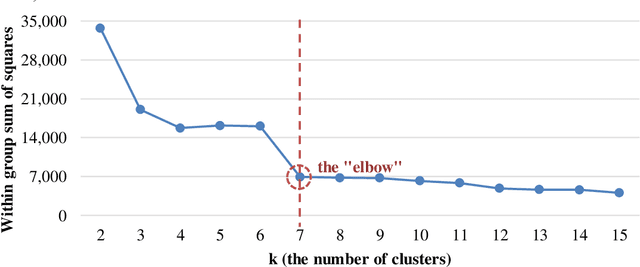
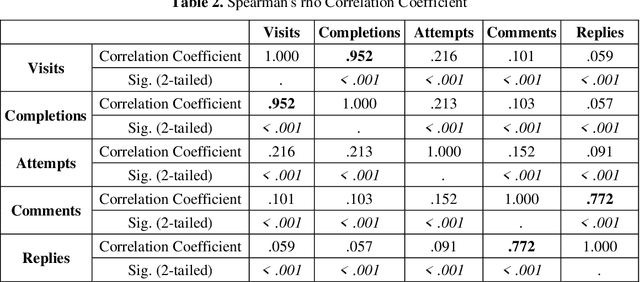
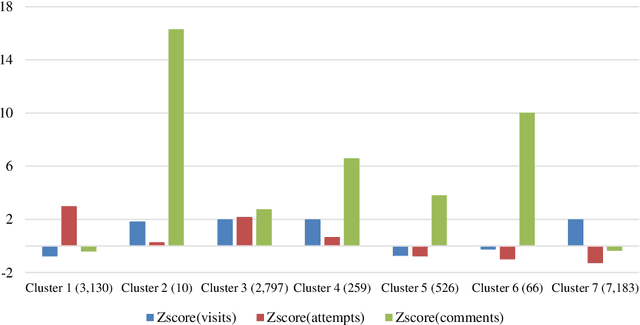
Abstract:Massive Open Online Courses (MOOCs) exhibit a remarkable heterogeneity of students. The advent of complex "big data" from MOOC platforms is a challenging yet rewarding opportunity to deeply understand how students are engaged in MOOCs. Past research, looking mainly into overall behavior, may have missed patterns related to student diversity. Using a large dataset from a MOOC offered by FutureLearn, we delve into a new way of investigating hidden patterns through both machine learning and statistical modelling. In this paper, we report on clustering analysis of student activities and comparative analysis on both behavioral patterns and demographical patterns between student subpopulations in the MOOC. Our approach allows for a deeper understanding of how MOOC students behave and achieve. Our findings may be used to design adaptive strategies towards an enhanced MOOC experience
Social Interactions Clustering MOOC Students: An Exploratory Study
Aug 10, 2020



Abstract:An exploratory study on social interactions of MOOC students in FutureLearn was conducted, to answer "how can we cluster students based on their social interactions?" Comments were categorized based on how students interacted with them, e.g., how a student's comment received replies from peers. Statistical modelling and machine learning were used to analyze comment categorization, resulting in 3 strong and stable clusters.
 Add to Chrome
Add to Chrome Add to Firefox
Add to Firefox Add to Edge
Add to Edge